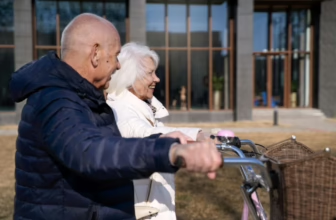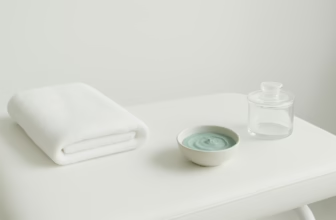Daily life in supportive living homes moves at different speeds. Some residents find peace in structure, while others face long hours filled with racing thoughts. Mindfulness offers a quiet and steady way to slow the mental pace. It does not ask for silence or perfect focus. It simply asks for attention to the present moment. In these homes, mindfulness blends easily into familiar routines like morning check-ins, meals, or short walks. Over time, these habits help build calm spaces and deeper emotional safety for everyone involved. The shift is not dramatic. It happens in small, consistent steps that gradually teach both residents and caregivers how to breathe through stressful moments.
Creating Calm Inside Shared Spaces
Every shared home carries a mix of voices, moods, and histories. Tension can rise when people with different needs live under one roof. For staff, the real challenge is often managing the quiet stress that grows beneath the surface. That is where mindfulness becomes a useful daily anchor.
When residents pause for short breathing breaks or quiet observation, the tone of the home changes. Meals feel less rushed. Conversations become softer and more intentional. Even short silences before group meals help everyone shift from noise to calm.
For those in group homes for schizophrenics, this kind of rhythm makes a real difference. Mindful breathing can lower sensory overload, reduce anxiety, and help the brain recover faster after moments of stress. Over time, these practices turn ordinary routines into sources of relief and connection.
Why the Mind Needs a Gentle Anchor
Our brains crave stimulation. For people living with schizophrenia, bipolar disorder, or anxiety, that craving can turn into chaos. Thoughts overlap. Sounds sharpen. Focus drifts. Mindfulness gives the mind something safe to return to when thoughts scatter.
Simple techniques such as counting breaths, noticing sensations, or guided imagery allow people to observe rather than react. The goal is not to stop thinking but to create space between thought and reaction. That small space can be powerful. Taking three slow breaths before speaking can change how a conversation ends.
Many of us think of calm as something that happens to us, yet mindfulness shows it is something we can practice. Caregivers also benefit when they share these moments with residents. Calm is not handed down from one person to another. It is built together.
Small Practices That Fit Into Daily Routines
Mindfulness becomes easier when it feels natural. Supportive homes are finding that even the smallest steps can shape peaceful days.
- Morning breathing circles: Three shared breaths before breakfast help everyone arrive mentally, not just physically.
- Mindful eating: Residents take the first bite slowly, noticing texture and taste before conversation begins.
- Sensory breaks: Quiet corners with dim light and soft sounds give anyone a chance to reset.
- Evening gratitude: Saying one small thing that went right keeps the focus on reassurance, not frustration.
These actions take only minutes, yet they teach the brain to slow down and stay present. Over weeks, residents start to seek those pauses on their own, a sign that calm is taking root.
How Supportive Staff Reinforce the Practice
Staff members play an important role in helping mindfulness last. The goal is not to force long meditation sessions but to remind residents gently throughout the day. A short phrase like Let’s take a breath before we move on works better than a full lesson.
Visual cues help, too. Posters showing simple breathing rhythms, warm wall colors, and soft music all send a signal of safety. Even tone of voice matters. A calm tone slows the entire room’s energy.
Some homes host short sessions where residents lead mindful breathing themselves. This shared responsibility helps build trust. It reminds everyone that peace is not a task assigned by staff. It is a skill built together through practice.
Science Behind the Stillness
Research supports what many caregivers see each day. Mindfulness lowers cortisol, the stress hormone that affects sleep, appetite, and mood. Brain scans show that consistent practice strengthens areas linked to emotional control and focus.
For residents managing schizophrenia or chronic anxiety, these biological changes often show up as fewer emotional outbursts, better sleep, and more stable moods. Many describe the effect as more space in my head or a quieter background. These small improvements add up to meaningful stability.
These shifts take time. Just like building physical strength, emotional steadiness comes from repetition. The same practice that feels small today becomes a habit of calm tomorrow. Over time, mindfulness starts shaping a healthier mental life, where stress responses soften and awareness becomes more natural. This foundation prepares the mind to respond more evenly when anxiety appears.
When Anxiety Spikes, Mindfulness Steps In
Stressful moments are unavoidable in supportive living environments. Arguments, loud noises, or missed routines can spark intense reactions. Mindfulness techniques help slow these moments before they grow.
Grounding exercises, such as naming five things you can see or three things you can hear, bring awareness back to the present. Staff can guide residents through these exercises calmly, showing that they are not alone. The shared act of noticing creates connection, not isolation.
Afterward, mindfulness also helps with recovery. Reflecting on what triggered the moment teaches residents to spot early warning signs next time. Each reflection is a lesson in self-awareness that reduces fear of future episodes.
Mindfulness and Medication Working Together
Supportive homes often rely on medication plans that provide stability. Mindfulness does not replace these treatments. It strengthens them. By paying attention, residents can recognize subtle mood changes or side effects early and share them with caregivers.
For example, a resident might notice feeling slower or more tired after a dosage change. Mindful awareness makes that observation clear, leading to better communication with nurses and doctors. Over time, this awareness builds trust between residents and caregivers.
It also encourages consistent medication use. When people understand how their body feels after mindful intake, they begin to see treatment as cooperation rather than control.
Bringing Family Into the Circle
Families often struggle to stay connected after a loved one moves into a supportive home. Mindfulness can help rebuild that connection in calm, respectful ways.
Some homes hold short family mindfulness sessions during visits. A few minutes of shared breathing before conversation softens tension and opens communication. Families can take these habits home too, using them during calls or weekend visits.
When families join the practice, they begin to see progress not only in medical terms but in small emotional shifts. A shared laugh, a longer moment of eye contact, or a more relaxed visit becomes a clear sign of growth.
Adapting Mindfulness for Different Abilities
Not everyone connects with mindfulness the same way. Some residents find sitting still difficult, while others prefer sound or movement. Supportive homes can adapt by offering choices.
- Those who enjoy movement might try slow, mindful walking around the garden.
- Sound-oriented residents may prefer gentle humming or soft instrumental music.
- Visual learners can focus on tracing patterns or coloring slowly, noticing each detail.
The key is flexibility. Mindfulness is not one shape. It is awareness in whatever form a person can manage. Consistency matters more than technique.
Pro Tip: Keep It Simple, Keep It Steady
Successful homes do not overload their schedules with long meditation sessions. They weave mindfulness into moments that already exist. A shared pause before meals. A calm word before bedtime. A quiet space open at any hour. These simple cues become a steady rhythm that everyone can rely on. Calm no longer feels like a special event. It becomes part of the daily routine.
A Shift That Feels Like Home
When mindfulness becomes a natural part of daily life, supportive homes start to feel more human and less clinical. Conversations slow. Residents smile more easily. Staff end their shifts less tense. The space feels lighter, safer, and more connected. We often think of healing as a grand transformation. In truth, it is built on many small returns to calm. Overactive minds may never go completely quiet, yet mindfulness shows us that peace is not a destination. It is a rhythm we return to again and again. Each mindful pause, each deep breath, is an act of care. It reminds everyone that stability is not found in control but in awareness. In supportive living, that quiet steadiness is what makes life feel not just manageable but meaningful.
Follow me down the rabbit hole!
I'm Alice and I live with a dizzying assortment of invisible disabilities, including ADHD and fibromyalgia. I write to raise awareness and end the stigma surrounding mental and chronic illnesses of all kinds.








